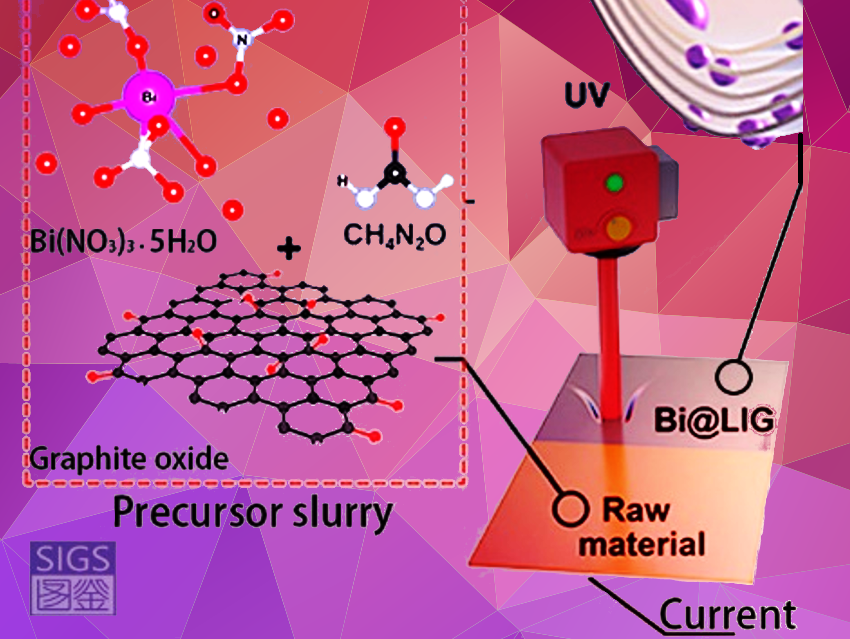Bismuth is a low-cost and environmentally benign metal anode material with promise in aqueous sodium-ion batteries (SIB). However, Bi has poor electrochemical stability because it undergoes large volume expansion.
Cheng Yang and colleagues, Tsinghua University, Shenzhen, China, have constructed strong chemical bonds between Bi nanoparticles and graphene nanosheets using laser irradiation. The team sonicated graphite oxide powder, bismuth nitrate, and urea together in water. The resultant slurry was coated onto stainless steel foil and, after drying, the material was irradiated with an ultraviolet laser. By modulating the repetition frequency and the defocusing value of the laser, the researchers were able to tune the photon energy with precision, resulting in a Bi@LIG composite with the heterostructure of alloys and with intrinsic bonding interactions.
The anchored metal–graphene heterostructure mitigates volume variations and allows direct exposure of Bi to the electrolyte in an operating battery. When incorporated into a SIB, a reversible capacity of 122 mAh g–1 at a large current density of 4 A g–1 was achieved for over 9500 cycles. The study could inspire fabrication of other metal–graphene composites containing group V elements, say the researchers.
- Inlaying Bismuth Nanoparticles on Graphene Nanosheets by Chemical Bond for Ultralong‐lifespan Aqueous Sodium Storage,
Haojie Zhu, Fangcheng Wang, Lu Peng, Tingting Win, Feiyu Kang, Cheng Yang,
Angewandte Chemie International Edition 2022.
https://doi.org/10.1002/anie.202212439



